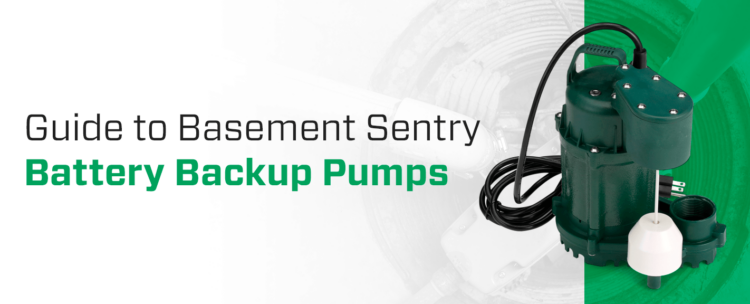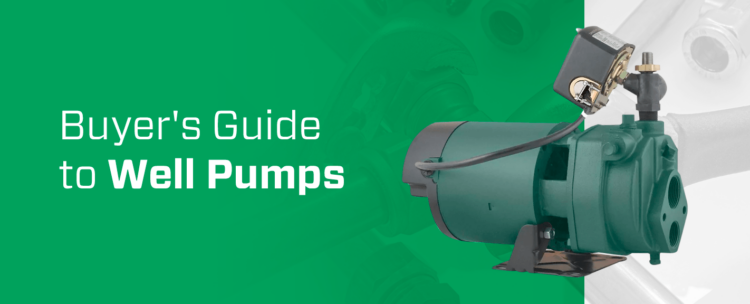
Between leaky pipes and torrential rains, water often has a way of finding its path straight into our basements. While soggy carpets or ruined belongings are significant inconveniences, structural damage is also a notable concern when basement flooding occurs.
A sump pump can offer you protection and peace of mind by effectively mitigating water when it enters your basement. Below, we look at the parts of a sump pump so you can learn more about how they work.

1. The Sump Pit
A sump pit is a dugout in your basement floor meant to collect water. When rainwater or groundwater threatens to flood your basement, the sump pit helps save the day. Typically, a sump pit is in the lowest part of your basement, where water accumulates. If your home doesn’t already have a sump pit, you’ll need to install one before you set up a sump pump.
2. The Float Switch
When the water level in the sump pit rises, the float switch rises with it. Once the water rises to a specific level, it signals your sump pump to start pumping water out of the pit. Your float switch won’t work correctly if it’s clogged with debris, so it’s important to inspect and clean it regularly.
3. The Check Valve
The check valve acts as a gate, opening when the sump pump needs to expel water and closing when the sump pump is done working. This operation creates an effective seal that stops water from reversing its course and returning to your basement.
Location and Maintenance
The check valve usually sits in the discharge pipe, just above the sump pump basin. When it comes to maintenance, look for debris that may interrupt the check valve’s operations, cleaning it out as necessary.
4. The Discharge Pipe
The discharge pipe is how water leaves your sump pump system. Its primary function is to provide a clear and efficient path for the sump pump water removal. This pipe typically runs from your sump pump to an outdoor location where the water can safely disperse without causing any harm to your property.
Potential Issues
Blockages, clogs or improper installation can hinder a discharge pipe’s effectiveness. You should monitor potential issues and ensure the pipe is properly maintained to prevent any water backup.
5. The Backup Power Source
Backup power sources for sump pumps are essential to keep you pump working during power outages, often during heavy storms. Here are the primary options:
- Battery backup systems: These are the most common and affordable backup power sources. They consist of a battery that powers the sump pump when the electricity goes out. Battery backup systems typically provide enough power for several hours of continuous operation. Some advanced models can even notify you when the battery needs replacement.
- Water-powered backup systems: These systems use your home’s water supply to power the sump pump. They don’t rely on electricity or batteries but work using water pressure. While they can be reliable, they might not suit areas with water shortages or low water pressure.
- Generator backup systems: Standby generators provide continuous power during outages by running on natural gas or propane.
- Combo backup systems: Some homeowners opt for a combination of backup systems. For instance, a battery backup system paired with a water-powered system or a generator can provide multiple layers of protection, ensuring your sump pump remains operational under various circumstances.

Testing and Maintenance
Your backup power source should undergo regular testing and maintenance. Ensure the batteries are charged if you’re using a battery backup. You should also test or your generator to make sure it is in good working order.
6. The Alarm System
The alarm system’s primary purpose is to provide an early warning in case something goes awry with your sump pump system. When water levels rise unexpectedly or there’s a pump failure, this system sounds the alarm to alert you to potential issues.
How It Works
A sump pump alarm system is usually equipped with sensors placed in the sump pit. These sensors trigger an alert when water levels become too high or the sump pump falters. This can be a loud alarm, a flashing light or even a notification to your smartphone, depending on the system you have in place.
Testing and Maintenance
Regular testing is crucial to ensure your system’s alarm is in working order. Like with the rest of your sump pump setup, be sure to continually check on the alarm to ensure it works when necessary.
How Does a Sump Pump Work Altogether?
An overall sump, also known as a sump pit or simply a sump, is a component of many building drainage systems, particularly in areas prone to excess groundwater or flooding. Its purpose is to collect and manage water accumulating in basements or crawl spaces, protecting the structure from water damage and flooding.
The sump pit is strategically placed in the lowest point of the building’s foundation to capture water as it flows or seeps in. Inside the sump pit resides a submersible sump pump. Once the water level rises to a specific point, a float switch or pressure sensor triggers the pump to activate. When activated, the sump pump begins to pump the accumulated water out of the sump pit through the discharge pipe.
By collecting and efficiently removing excess water, the sump pump helps maintain the structural integrity of the building and preserve the quality of the indoor environment. Regular maintenance and attention to the components of the system are essential to ensure its reliable operation when needed most.

Keeping Your Basement Dry With Zoeller
Zoeller has been at the forefront of the wastewater industry for over seven decades, setting the standard for excellence in sump pump technology. Our commitment to continuous research and development ensures we remain ahead of the curve, constantly improving our products and processes to offer our customers and end users the highest possible quality.
Our product line is catered to homeowners needing submersible pumps designed for efficient water relocation, capable of handling solids with a diameter of less than 2 inches. Within our selection, you’ll find various submersible sumps and effluent pumps engineered for optimal performance and efficient operation. Many of our pumps come with backup chargers and built-in Wi-Fi capabilities, adding an extra layer of convenience and peace of mind to your water management needs.
Contact us today for information on our large selection of sump products or any of our other water pumps.



